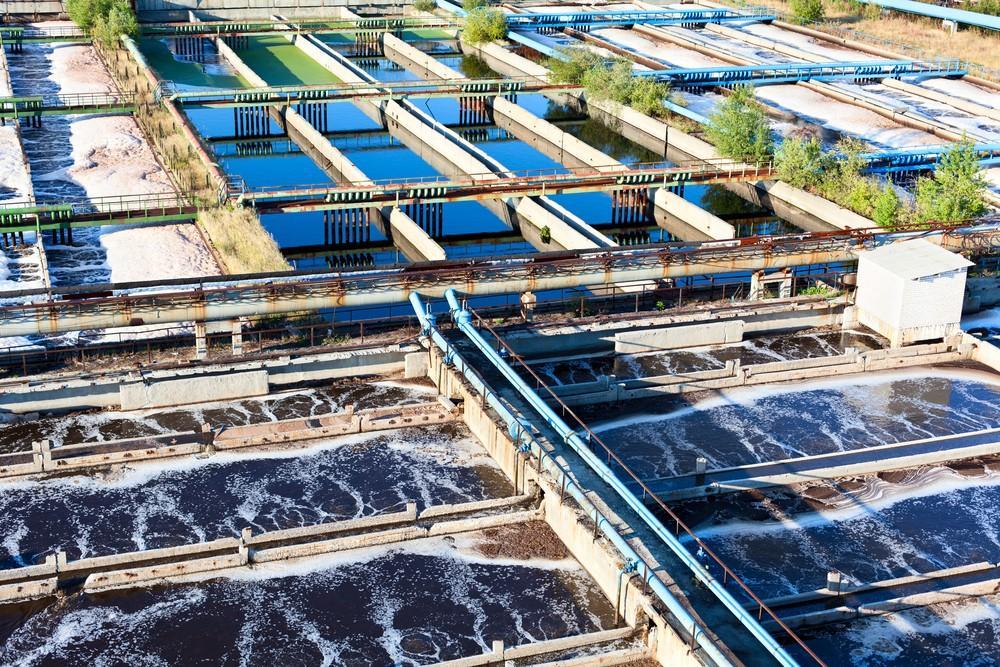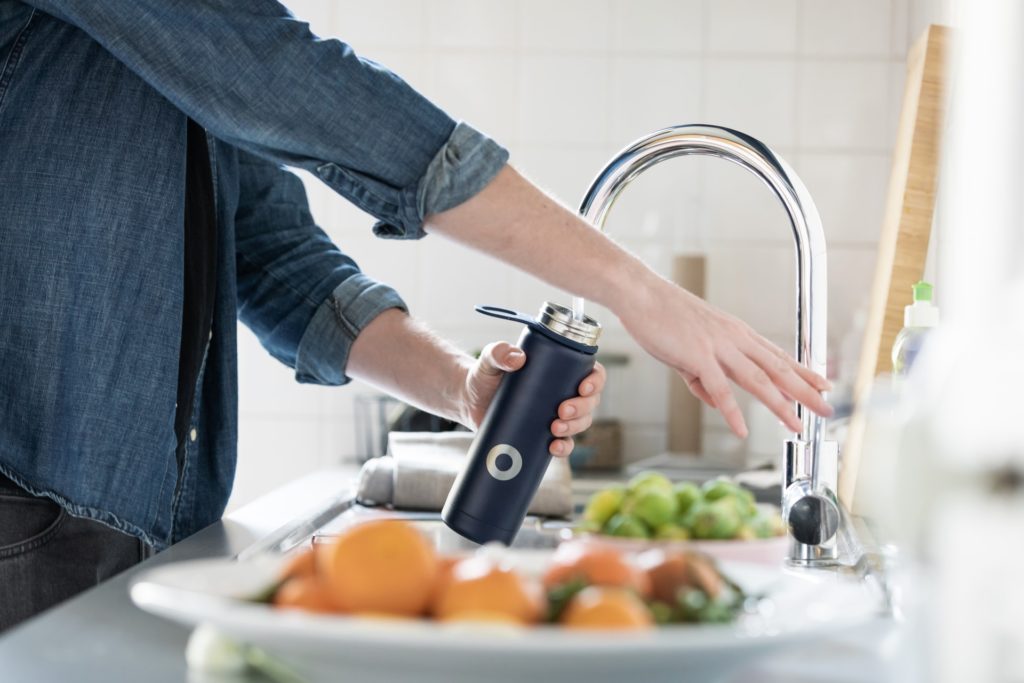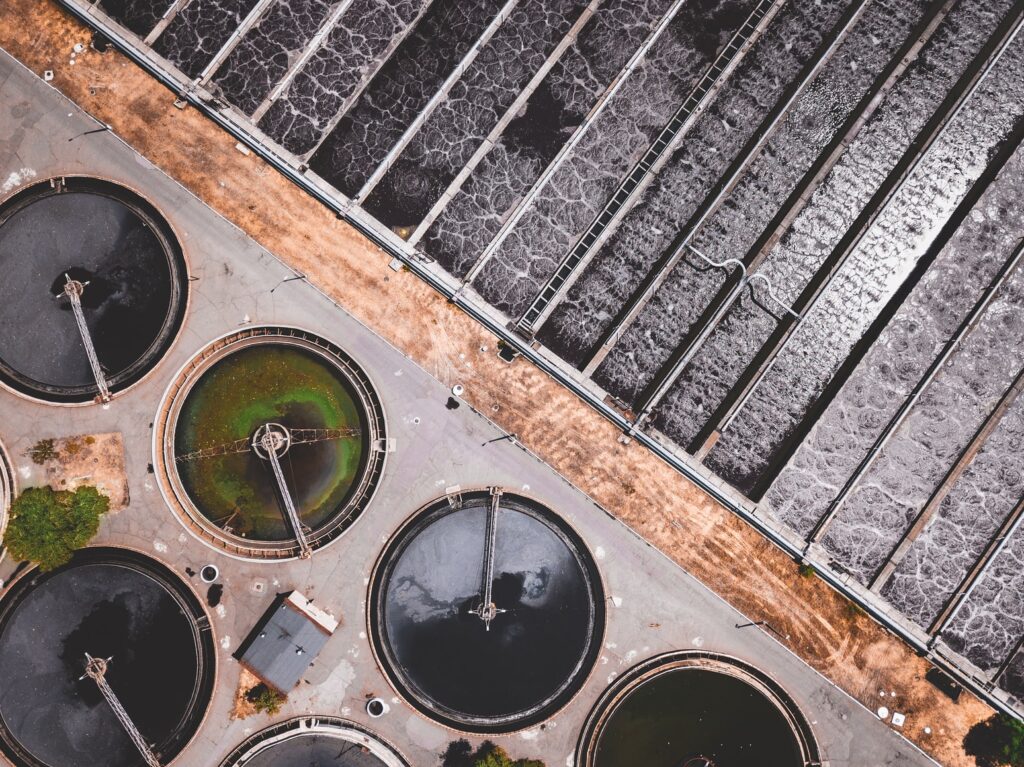10/16/2023 | Agriculture and Farming | 12 MINUTE READ
Controlling IoT Devices in Water Quality Management

Water quality management lies at the heart of environmental preservation and public health endeavors. Guaranteeing the cleanliness and safety of our water sources is paramount to the well-being of both human populations and the ecosystems they inhabit. The advent of the Internet of Things (IoT) has revolutionized our approach to water quality monitoring and control, ushering in a new era of precision and efficiency.
Traditionally, water quality assessment relied on manual sampling and laboratory testing, methods that were often labor-intensive, time-consuming, and prone to human error. IoT technology has transformed this process, enabling continuous, real-time monitoring of water quality parameters. A network of strategically deployed IoT sensors, equipped with sophisticated probes and analytical capabilities, provides a comprehensive and up-to-the-minute picture of water conditions.

The data collected by these sensors is seamlessly transmitted to centralized cloud platforms for processing and analysis. Advanced algorithms and machine learning techniques are employed to interpret the data, identifying trends, anomalies, and potential water quality threats. This real-time intelligence empowers water management authorities to make informed decisions promptly, ensuring timely interventions to prevent water contamination and safeguard public health.
The benefits of IoT-enabled water quality management extend far beyond enhanced monitoring capabilities. IoT devices can be integrated into automated control systems, enabling precise regulation of water treatment processes. This automation optimizes chemical dosing, energy consumption, and resource utilization, leading to reduced environmental impact and increased cost-effectiveness.
Benefits of IoT Devices in Water Quality Management
IoT technology has also revolutionized water leak detection, a critical aspect of water conservation and infrastructure maintenance. Smart meters equipped with sensors can pinpoint leaks in real-time, enabling prompt repairs and minimizing water loss. This proactive approach not only conserves precious water resources but also reduces operational costs associated with water wastage and infrastructure damage. In conclusion, the integration of IoT devices has revolutionized water quality management, transforming it into a data-driven, proactive, and sustainable practice. By providing real-time insights and enabling automated control, IoT technology empowers water management authorities to safeguard the quality of our water resources, ensuring a sustainable future for both human and environmental health.
Improved Data Collection and Monitoring
IoT devices enable continuous and real-time data collection from various water sources. Traditional methods often involve periodic manual sampling, which may miss crucial data points or fail to capture sudden changes in water quality. IoT devices collect data 24/7, providing a comprehensive and accurate picture of water conditions.
Real-Time Data Analysis and Decision-Making
The data collected by IoT devices can be instantly transmitted and analyzed, allowing water quality managers to make informed decisions promptly. Real-time monitoring helps identify anomalies, pollution events, or deteriorating water quality, enabling rapid response and mitigation efforts.
Cost-Effective Solutions
IoT devices offer cost-effective solutions for water quality management. They eliminate the need for extensive human resources and frequent on-site visits, reducing operational costs. Additionally, predictive maintenance based on data analysis can prevent expensive breakdowns and equipment replacement.
Environmental Conservation and Sustainability
IoT devices contribute to environmental conservation and sustainability by enabling precise control over water quality parameters. These devices can optimize chemical dosing, energy consumption, and resource utilization, reducing the ecological footprint of water treatment processes.
Types of IoT Devices for Water Quality Management

Water Quality Sensors
Water quality sensors are equipped with various probes to measure parameters such as pH, turbidity, dissolved oxygen, conductivity, and more. These sensors provide real-time data on the physical and chemical properties of water.
Remote-Controlled Actuators
IoT-enabled actuators allow remote control of valves, pumps, and other equipment used in water treatment processes. Operators can adjust settings and flow rates to maintain optimal water quality without needing physical presence.
Data Loggers and Communication Devices
Data loggers collect, store, and transmit data from water quality sensors and other monitoring equipment. Communication devices enable the seamless transfer of data to centralized control centers or cloud-based platforms for analysis and visualization.
Integration with Existing Infrastructure
IoT devices can be integrated with existing water treatment infrastructure, making upgrading and modernizing outdated systems easier. This integration enhances the functionality of legacy equipment and extends its lifespan.
Critical Considerations for Implementing IoT in Water Quality Management
Data Security and Privacy
Protecting sensitive water quality data is paramount. Robust cybersecurity measures must be in place to prevent unauthorized access or data breaches. Encryption and secure communication protocols are essential components of IoT security.
Compatibility with Existing Systems
Compatibility with existing water treatment systems and protocols is crucial for a smooth transition to IoT-based solutions. Ensuring that new devices can seamlessly integrate with legacy equipment is vital.
Scalability and Future-Proofing
Water quality management needs to evolve. Implementing scalable IoT solutions that can adapt to changing requirements and accommodate future advancements is essential to maximize the return on investment.
Regulatory Compliance
Adherence to local, national, and international water quality regulations is non-negotiable. IoT systems must comply with regulatory standards to ensure the safety and legality of water treatment processes.

Step-by-Step Guide to Controlling IoT Devices for Water Quality Management
By following these steps, you can effectively control IoT devices for water quality management, ensuring that your water treatment system operates optimally and consistently meets quality standards. Regular monitoring, analysis, and maintenance are essential for long-term success in managing water quality.
Device Selection and Procurement
- Identify Water Quality Parameters: Start by identifying the specific water quality parameters you want to monitor and control. Common parameters include pH levels, turbidity, temperature, dissolved oxygen, and various contaminants.
- Research and Selection: Research IoT devices that are suitable for monitoring and controlling the identified parameters. Consider factors like sensor accuracy, compatibility, and scalability. Consult with experts if necessary.
- Procurement: Once you’ve selected suitable devices, procure them from reputable suppliers or manufacturers. Ensure that the devices meet your requirements and are compatible with your water treatment system.
Installation and Calibration
- Strategic Locations: Install the IoT devices at strategic locations within your water treatment system. Ensure that they are properly placed to capture accurate data representative of the water quality throughout the system.
- Calibration: Calibrate the sensors and actuators according to the manufacturer’s guidelines. Calibration is crucial to ensure accurate measurements and control. Regularly recalibrate devices to maintain accuracy.
Data Collection and Analysis
- Configuration: Configure the IoT devices to collect data at regular intervals. Set up appropriate sampling rates based on the parameters being monitored.
- Data Protocols: Implement data storage and transmission protocols. Ensure that collected data is securely stored and can be easily accessed for analysis.
- Data Analysis: Utilize data analysis tools and software to monitor water quality trends. Analyze historical data to identify patterns, anomalies, and potential issues. Implement algorithms or models for real-time analysis and anomaly detection.
Remote Monitoring and Control
- Secure Remote Access: Set up remote access to IoT devices through secure channels, such as Virtual Private Networks (VPNs) or encrypted communication protocols. Ensure that only authorized personnel can access and control the devices.
- Control Mechanisms: Implement control mechanisms to adjust equipment settings as needed based on the data and analysis results. This can include automated adjustments to water treatment processes or sending alerts for manual intervention.
Maintenance and Troubleshooting
- Maintenance Schedule: Establish a routine maintenance schedule for the IoT devices. Regularly inspect, clean, and calibrate sensors. Replace any faulty components promptly.
- Device Health Monitoring: Implement device health monitoring to proactively detect and address issues. Set up alerts for critical conditions or malfunctions.
- Troubleshooting: When issues arise, perform troubleshooting following manufacturer guidelines or best practices. Keep a record of issues and solutions for future reference.
Case Studies: Exemplary Applications of IoT in Water Quality Management
The integration of Internet of Things (IoT) technology into water quality management systems has revolutionized the way we monitor, assess, and maintain the integrity of our water resources. By deploying a network of intelligent sensors and utilizing advanced data analytics, municipalities and water utilities worldwide are reaping significant benefits, from enhanced efficiency to proactive problem-solving. Let’s delve into two exemplary case studies that showcase the transformative power of IoT in water quality management:
Barcelona’s Smart Water Grid: A Model of Efficiency and Sustainability
The Catalan capital, Barcelona, has emerged as a global frontrunner in embracing IoT technology for water management. The city’s implementation of a smart water grid, powered by an extensive network of sensors and real-time data analytics, has yielded remarkable results. By closely monitoring water flow and pressure across the distribution system, the smart grid has enabled the detection and localization of leaks with unprecedented speed and accuracy. This proactive approach has dramatically reduced water losses, conserving precious resources and minimizing the financial burden on the city and its residents.
IBM’s Smarter Water Solution: Unleashing the Power of AI for Predictive Maintenance
IBM’s Smarter Water Solution epitomizes the convergence of IoT, artificial intelligence (AI), and machine learning in water quality management. This innovative solution leverages a combination of real-time sensor data, weather forecasts, and machine learning algorithms to provide predictive insights into water quality and potential system failures. By anticipating and addressing potential issues before they escalate into major disruptions, Smarter Water Solution has empowered cities like Oakland, California, to prevent costly infrastructure failures and save millions of dollars in maintenance expenses.
These case studies highlight the transformative potential of IoT in water quality management. By harnessing the power of connected devices, data analytics, and AI, municipalities and water utilities can optimize resource utilization, safeguard public health, and ensure the sustainability of our water resources for generations to come.

Challenges and Solutions in IoT-based Water Quality Management
The implementation of IoT-based water quality management systems presents several challenges that need to be addressed to ensure the successful and sustainable operation of these systems.
Data Security Challenges
Protecting sensitive water quality data from cyber threats is a critical concern. Cybercriminals may target IoT systems to gain access to sensitive data, disrupt operations, or hold data for ransom.
Solutions:
- Implement robust cybersecurity measures, including encryption and regular security audits, to protect sensitive data and maintain system integrity.
- Employ access control mechanisms to restrict access to sensitive data to authorized personnel only.
- Continuously monitor IoT systems for suspicious activity and implement incident response protocols to address potential threats promptly.
Interoperability Issues
Ensuring that IoT devices from different manufacturers can communicate effectively is essential for seamless data collection and analysis. However, interoperability issues often arise due to proprietary communication protocols and data formats.
Solutions:
- Adopt open communication standards and protocols, such as MQTT (Message Queuing Telemetry Transport) or OPC UA (Open Platform Communications Unified Architecture), to facilitate seamless communication between devices from different vendors.
- Implement data translation and aggregation tools to convert data from various formats into a standardized format for analysis.
- Encourage collaboration among IoT device manufacturers and industry standards bodies to promote the development and adoption of interoperable standards.
High Initial Costs
The upfront cost of implementing IoT systems, including hardware, software, installation, and maintenance, can be significant and may pose a barrier for some municipalities and water utilities.
Solutions:
- Conduct a thorough cost-benefit analysis to demonstrate the long-term economic benefits of IoT-based water quality management, including reduced water losses, improved operational efficiency, and extended asset lifespan.
- Explore phased implementation approaches to spread out the initial costs and prioritize areas where the benefits are most immediate and impactful.
- Seek funding opportunities from government grants, private investors, or public-private partnerships to support the implementation of IoT systems.
By addressing these challenges and adopting appropriate solutions, municipalities and water utilities can harness the full potential of IoT technology to optimize water quality management, enhance sustainability, and safeguard public health.
Future Trends in IoT for Water Quality Management
The convergence of IoT, artificial intelligence (AI), and machine learning (ML) promises to revolutionize water quality management, ushering in an era of enhanced precision, proactive problem-solving, and autonomous decision-making. Let’s explore some key trends that are shaping the future of IoT in water quality management:
- Advancements in Sensor Technology: Sensor miniaturization and improved accuracy will enable more precise and granular water quality monitoring. This will allow for the detection of contaminants and anomalies at unprecedented levels, providing valuable insights into the health of our water resources.
- AI and Machine Learning Integration: AI algorithms will become increasingly integrated into IoT systems, enabling real-time data analysis, predictive maintenance, and anomaly detection. This will empower water utilities to anticipate potential problems, such as infrastructure failures or contamination events, before they occur, allowing for timely intervention and mitigation measures.
- Increased Automation and Autonomy: Autonomous IoT systems will have the ability to make real-time decisions without human intervention. This will enable systems to adjust water treatment processes, activate valves, and respond to anomalies automatically, minimizing the need for constant human oversight.
- Expansion of IoT Networks: The proliferation of IoT devices and the development of low-power, wide-area networks (LPWANs) will extend the reach of water quality monitoring to remote and difficult-to-access locations. This will provide a more comprehensive understanding of water quality across vast areas, including rural and agricultural settings.
- Edge Computing and Data Analytics: Edge computing, where data is analyzed closer to the source, will become increasingly prevalent in IoT-based water quality management systems. This will reduce data transmission latency, enable faster decision-making, and minimize the computational burden on cloud-based systems.
- Real-time Visualization and Analytics: Real-time data visualization platforms will provide water managers with easy access to critical water quality data, enabling them to identify trends, monitor anomalies, and make informed decisions quickly.
- Integration with Existing Water Management Infrastructure: IoT systems will be seamlessly integrated with existing water management infrastructure, including Supervisory Control and Data Acquisition (SCADA) systems, to provide a holistic view of water quality and system performance.
- Citizen Participation and Engagement: IoT-enabled water quality monitoring systems will open up new avenues for citizen participation and engagement. Real-time water quality data can be shared with the public through open data portals and mobile applications, empowering individuals to make informed decisions about their water consumption and health.
These future trends underscore the transformative potential of IoT in water quality management. By embracing these advancements, we can move towards a future of water security, sustainability, and public health.
Conclusion
IoT devices have revolutionized water quality management, providing real-time data, cost-effective solutions, and enhanced environmental conservation. As technology advances, organizations should consider implementing IoT systems to improve water quality control, ensuring the safety and sustainability of our precious water resources. Embracing these innovations will be vital to addressing the challenges of water quality management in the future.
Posted by Joshua Samp on October 16, 2023
Sensorex is a global leader in the design and manufacture of quality sensors for water quality and process applications. The company offers more than 2000 sensor packages for pH, ORP, conductivity, dissolved oxygen, free chlorine, chlorine dioxide, UV transmittance and other specialty measurements, as well as a full line of sensor accessories and transmitters. Its expert technical support engineers solve analytical sensor challenges with custom designs and off the shelf products.




